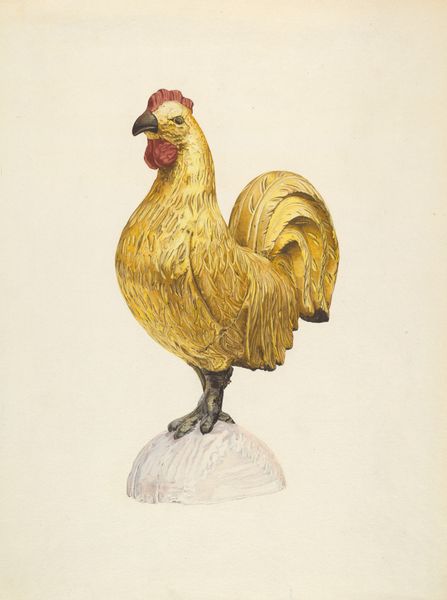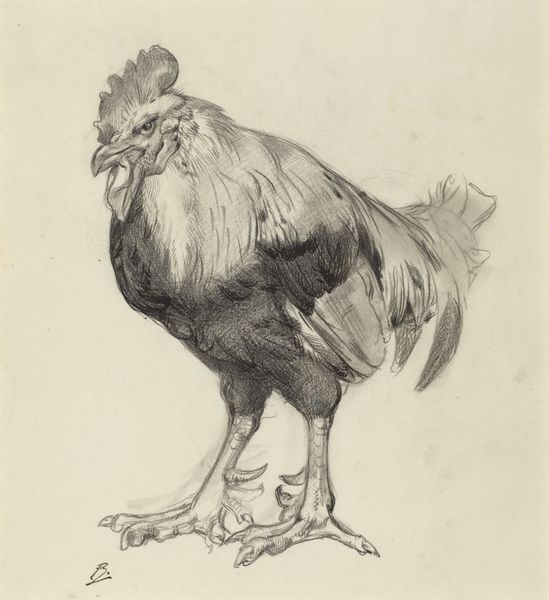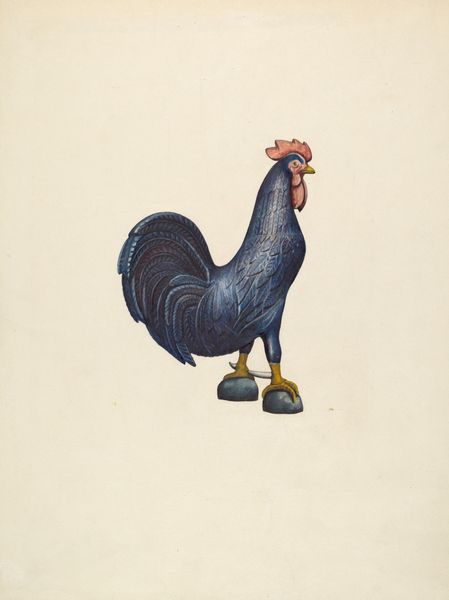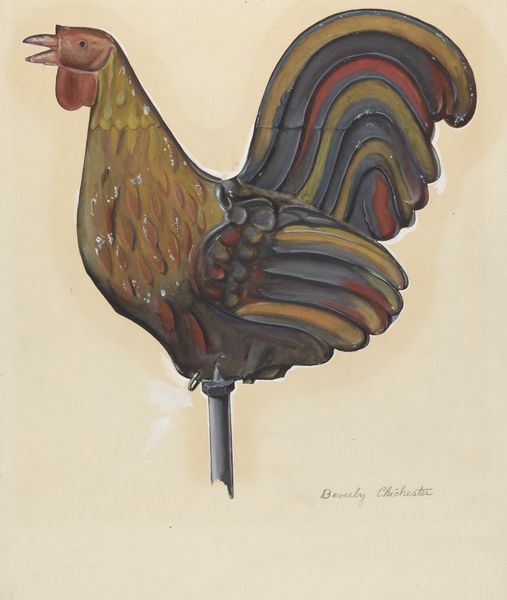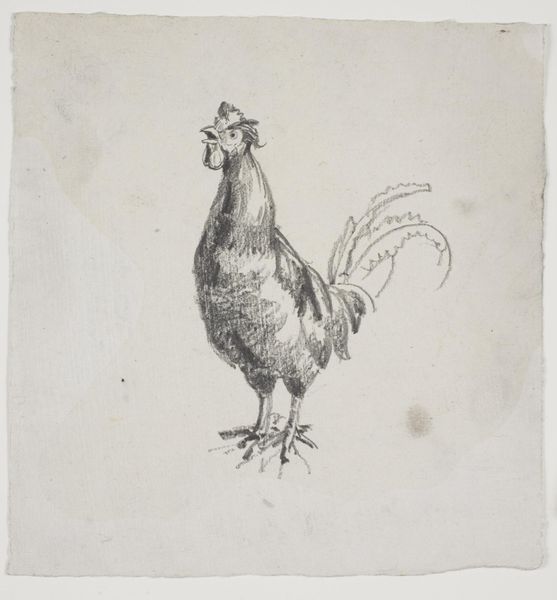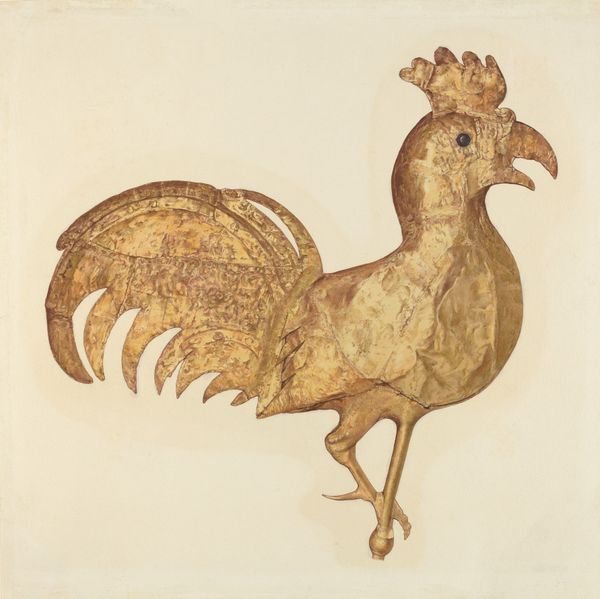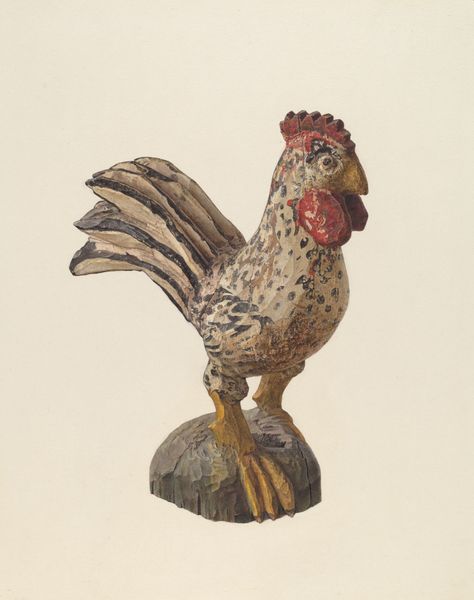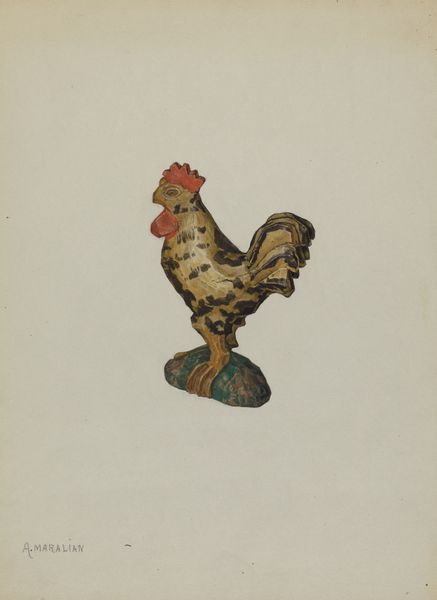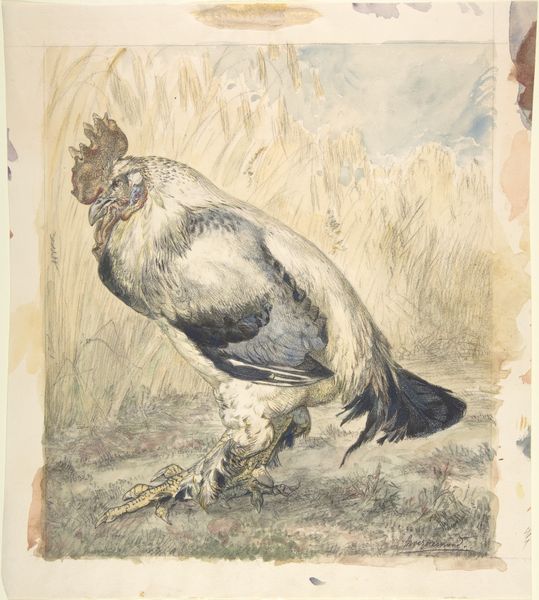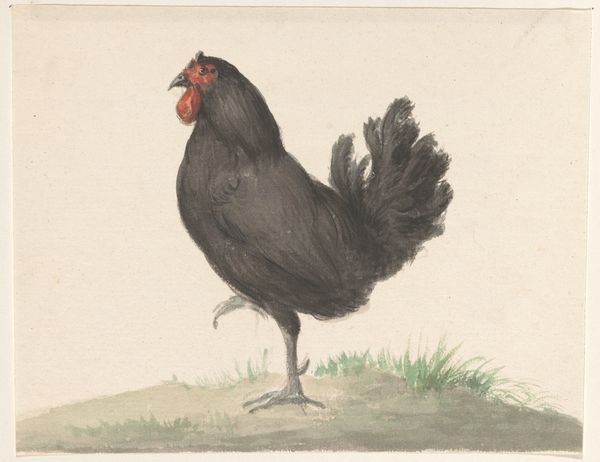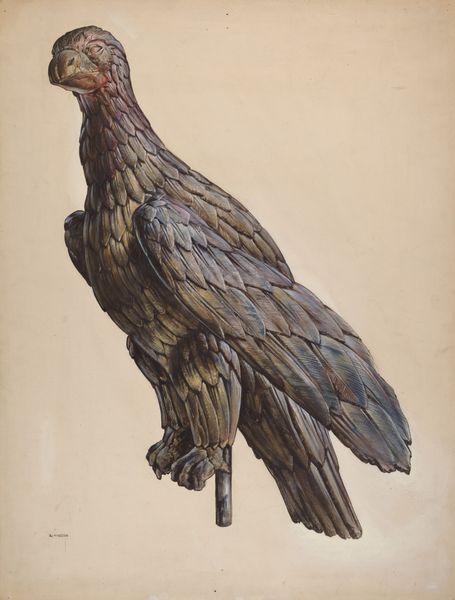
painting, oil-paint, paper, wood
#
portrait
#
narrative-art
#
painting
#
oil-paint
#
figuration
#
paper
#
oil painting
#
romanticism
#
wood
#
animal drawing portrait
#
academic-art
Dimensions: 21.8 cm (height) x 18.8 cm (width) (Netto)
Curator: Before us hangs Johan Thomas Lundbye's "En Hane," painted in 1847, using oil on paper laid on wood. Editor: My first impression is how understated it is. There's a certain muted elegance. It's just a rooster, but there's something dignified about it, even imposing within its simple frame. Curator: Lundbye, positioned in the Danish Golden Age, used the animal portrait as a mirror reflecting ideas of nation, masculinity, and rurality. The rooster, an early symbol of national awakening across Europe, carried strong social and political associations in a pre-democratic context. Editor: Fascinating. Looking closer, I'm interested in the materiality—the way the oil paint interacts with the paper support. The texture isn't striving for photorealism; rather, there's a deliberate visibility of the brushstrokes that calls attention to the act of making. Was paper a common support for oil at this time? Curator: The choice of paper, typically associated with studies, speaks to a certain informality. The traditional boundary between preliminary sketch and finished painting gets blurred. He seems to suggest the potential of the everyday to reveal universal truth, not dissimilar to Millet’s turn to similar imagery to later champion laborers and workers as valuable and inherently dignified in ways never before seen. Editor: The rooster itself is clearly the product of selective breeding, a commodity, implying something of agricultural practices of the era. There’s the labor involved in producing the image as an object of display. The plain background sets up the rooster as an aesthetic object, divorcing him from the barnyard realities. It invites us to consume, literally and figuratively. Curator: Precisely. Consider, too, the rooster’s posture – erect, seemingly aware of being looked at. Is Lundbye making a comment on performative masculinity, linking animal representation to constructions of national identity? The question lingers for us to interpret the place of masculine subjectivity in an era defined by rigid social hierarchies. Editor: It’s compelling to consider it from that angle. Thinking about the materiality combined with these notions gives "En Hane" surprising depth. What at first appeared simple holds complexity when viewed through different lenses. Curator: Indeed, "En Hane" is a potent reminder of how artistic representations intersect with constructions of power and social norms, inviting critical re-readings to question the values promoted at a critical juncture of European modernity.
Comments
No comments
Be the first to comment and join the conversation on the ultimate creative platform.
